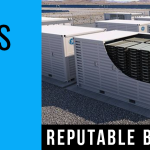
Senate legislators, energy investors and utilities are looking to the next generation of energy storage to achieve “deep decarbonization,” but few researchers are confident that today’s experimental technologies will ensure wind and solar become the dominant sources of power.
Over the past decade, power companies have cultivated a taste for lithium-ion storage, stringing together battery packs into a giant sponge that soaks up electricity and later delivers it for four- to eight-hour increments.
Markets for that kind of short-term battery storage are modest, but they’ve grown eighteenfold since 2009, according to a count by Environment America, a green advocacy group.
Some believe that with sufficient resources, scientists and entrepreneurs could pioneer a kind of storage that multiplies the current four-to-eight-hour period of power delivery several times over. States, cities and companies have put out a flood of 100% renewable or zero-emission plans, which count on development of technology that can store electricity for days or weeks.
“There’s a sense that this is coming,” said Scott Litzelman, a program director at the Advanced Research Projects Agency-Energy (ARPA-E).
Yet energy storage could hit a wall if power companies aren’t already moving to replace most nonrenewable generation with wind and solar. Few energy analysts say they believe long-term storage would serve the same purpose as nuclear, gas or coal plants that produce a constant stream of “baseload” power.
On a highly renewable grid, power companies would still have to encourage consumers to use less power at certain hours. And expanding transmission connections between regions could, in some cases, improve reliability in ways similar to storage, they say.
Tim Grejtak, an analyst at the New York-based market research firm Lux Research Inc., noted in a presentation last year that the applications for long-duration systems were so far “vaguely defined.”
Early deployments might take place on island grids or remote areas, he predicted. But “in our minds, it’s sort of a solution of last resort. And as such, we don’t think it will see a huge deployment, in terms of pure numbers of projects.”





